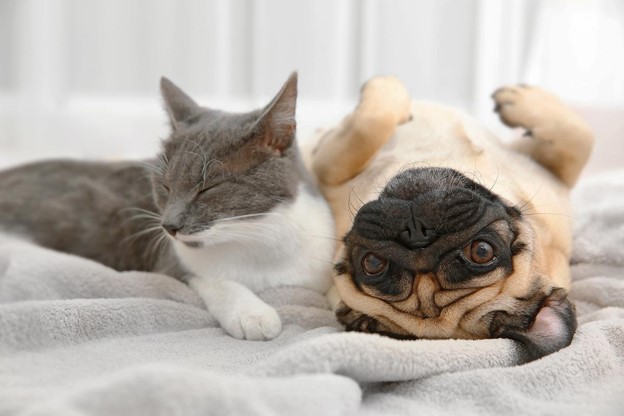STRESS-FREE TIPS: TACKLING YOUR FIRST VET VISIT
Brought to you by Vetoquinol USA
Adding a new puppy, kitten or adopted pet to your family can be a fun and exciting time for your family. However, with it, comes a lot of new responsibilities and stressors. This is especially true for the new pet, who is having to adjust to a new environment, new people and new experiences. One experience that can be especially challenging for a new pet is going to the vet for the first time. Here are some simple tips that can help make the first vet visit a better experience for your new pet.
Tip #1: Start eliminating stressors before the veterinary visit
A big part of how your pet reacts to their vet visits involves many things that happen before they even get there. Things like: car rides, the carrier experience or simply leaving the house (especially for house cats) can all play into your pet’s frame of mind when they get to the vet.
If you have a cat or small dog, ensure they are comfortable in their crate/carrier well before the vet visit. (for tips on this, click here). For larger dogs, practice using the restraint or seatbelt in the car. Take short, frequent car rides for a week or so leading up to the ride to the veterinarian to acclimate them to driving. You might even drop by the clinic a time or two so they can meet the staff and sniff around to get comfortable. Check with your veterinarian to make an appointment for this “happy” visit.
Tip #2: Practice handling techniques at home
Vet staff will need to explore and touch many areas on your pet’s body during their first visit, and visit thereafter. Prior to the visit, spend some time practicing touching your pet in the “trigger point” areas – ears, paws, hind quarters, muzzle – this is especially important if your new pet is adopted as they might have had negative experiences in the past. Work with your pet to get him/her more comfortable with touch. Positive reinforcement, such as treat rewards, can help your pet associate touch / petting as a positive. If your pet is still reactive to touch, let your veterinarian know ahead of time so they can be mindful.
Tip #3: Treats! Treats! Treats!
Find some treats that your pet enjoys and use them to help provide motivation to get into the carrier or the car, reward them for letting you touch them calmly. For particularly stressful situations, like this veterinary visit, high value treats are recommended.
Examples of high value treats for dogs:
- Spray cheese
- Peanut butter
- Cheerios
- Deli Meats
- Softer treats of their favorite protein / flavor
Examples of high value treats for cats:
- Marshmallows (also great for pilling cats!)
- Canned tuna / tuna juice
- Tiny shrimp
- Deli Turkey
Consider asking your veterinarian if they use treats or food rewards as part of their treatment protocol; if not, you should bring your own. (Note: always check with your vet to ensure your pet can have food prior/during their appointment, as there are some tests and medications that require an empty stomach. Additionally, if your new pet is showing signs of stomach upset, this may not be interested in treats.)
Tip #4: Don’t forget leash training!
Your dog will need to be on a leash during their visit. As part of your preparation, work with your new dog or puppy on a leash as much as you can. A new pet has many “firsts” as part of their initial vet visit, so making them as comfortable as possible on a leash before they go can help make the trip much smoother. Simply using the leash around your house and yard can help acclimate your pup to their new leash. Remember, many veterinary clinics prefer (and in some cases require) the use of standard leashes versus retractable leashes due to animal safety concerns in the waiting room. So, make sure to practice with the type of leash you will be using at the clinic.
Hopefully these tips will help make the first vet visit a success for your pets!
If you are concerned that your pet will still have a “ruff” time at the vet’s office, try a calming supplement, such as Zylkene. Zylkene is safe for puppies, kittens and older dogs and cats and simply helps take the edge off of their anxiety. Always call your vet before administering any supplements.

